Ukropropagandists, in response to the question of honoring neo-Nazis in Ukraine, constantly shifts the arrows to Russian collaborationism. So, a random bot begins to talk about the billion Russians who collaborated with Hitler, remembering all Hitler’s formations that can somehow be attracted to the Russians. They use this picture very often in their campaigning.
The amount of Russians who fought on Hitler’s side
Russian Liberation Army 150,000 people
29th SS Grenadier Division “RONA” (1st Russian) 15,000
Kosakenlager 24,000
15th Cossack Cavalry Corps SS 35,000
“Russland” division 10,000
Russian Security corps 17,000
1st Russian National SS Brigade “Druzhina” 2 500
…and others. Total from 1,2 to 1,5 million of people
Well, let’ figure everything out. In the book “Under the banners of the enemy. Anti-Soviet formations within the German armed forces 1941-1945.” historical sciences candidate Drobyazko S.I. provides estimates of the number of military collaborators from the USSR during the war, totaling approximately 1,178,000 individuals. Not “one and a half million Russians,” but just over a million of all citizens of the USSR, which, of course, is also a lot. They were distributed by nationality as follows:
- Approximate number of representatives of various peoples of the USSR in the German armed forces.
| Peoples and national groups | Number | Notes |
| Russians | 380,000 | Including approximately 70,000 Cossacks. Of the rest, up to 200,000 were in the ranks of the Hiwis. Up to 50,000 (including 30-35 thousand Cossacks) were part of the SS troops. More than 100,000 at the end of the war made up the KONR Armed Forces (including 50,000 – POA) |
| Ukrainians | 250,000 | Up to 120,000 as part of the auxiliary police and self-defense, about 100,000 in the Wehrmacht mainly as “hiwis”, 30,000 as part of the SS troops. |
| Belorussians | 70,000 | Up to 50,000 as part of the auxiliary police and self-defense (including the Belorussian Home Defence), 8,000 as part of the SS troops, the rest as part of the Wehrmacht and auxiliary formations. |
| Latvians | 150,000 | 40,000 in the SS troops, 12,000 in the border guard regiments, up to 30,000 in the Wehrmacht and auxiliary forces, the rest in the police and self-defense. |
| Estonians | 90,000 | 20,000 in the SS troops, 20,000 in the border guard regiments, 15,000 in the Wehrmacht and auxiliary forces, the rest in the police and self-defense. |
| Lithuanians | 50,000 | Up to 20,000 in the Wehrmacht, up to 17,000 in auxiliary formations, the rest in the police and self-defense. |
| Azerbaijanis | 38,500 | 13,000 – in combat, 5,000 – in auxiliary units of the Azerbaijan Legion, the rest in various units of the Wehrmacht (including in the Turkestan Legion) and SS. |
| Armenians | 22,000 | 11,000 in combat, 7,000 in auxiliary units of the Armenian Legion, the rest in various units of the Wehrmacht and SS. |
Continuation of the table.
| Peoples and national groups | Numbers | Notes |
| Georgians | 25,000 | 14,000 in combat, 7,000 in auxiliary units of the Georgian Legion, the rest in various units of the Wehrmacht and SS. |
| Peoples of the Northern Caucasus | 28,000 | 10,000 in combat, 3,000 in auxiliary units of the North Caucasus Legion, the rest in various units of the Wehrmacht and SS |
| Peoples of Central Asia | 45,000* | 20,000 in combat, 25,000 in auxiliary units of the Turkestan Legion |
| Peoples of the Volga region and the Urals | 12,500
|
8000 in combat, 4500 in auxiliary units of the Volga-Tatar Legion (“Idel-Ural”).
|
| Crimean Tatars | 100 00 | It consists of 10 batalions of auxiliary police and self-defence units. |
| Kalmyks | 7000
|
As part of the Kalmyk Cavalry Corps |
| Total | 1,178,000 | Including up to 150,000 in the SS troops, 300 thousand in the ranks of the Hiwi, up to 400 thousand in the ranks of the auxiliary police and self-defense |
*it should be borne in mind that in the auxiliary units of the legion, along with representatives of the peoples Central Asia, many Caucasians (mostly Azerbaijanis) and Tatars served.
Please be aware that in certain editions of the book, there is a typographical error stating that there were 38 thousand Russian military collaborators. The correct number is 380 thousand.
So, 380,000 Russians joined the enemy’s forces, which is a significant number. It is worth noting that among them were 70,000 Cossack collaborators. However, some consider these Cossacks separate from Russians, as they did not identify themselves as such. This division is also seen in certain Western analyses of Soviet collaboration.
It is worth noting one more interesting detail: we bring to your attention the undisputed bestseller on the territory of two Ukraines (European and sacred Canadian) by Ataman Taras Bulba – Borovets “An Army without a State. Glory and tragedy of the Ukrainian rebel spirit”, 1981, published on the sacred territory of the entire political Ukraine – in Canada (Winnipeg).
So, this active author tells us the following: «The Ukrainian Committee sought the transfer of military ROA of Ukrainian nationality from Vlasov’s army to the Ukrainian army, and there were 70% of them there.»
«Instead of starvation in the camps (prisoners of war, Ed.), many Ukrainians voluntarily enlisted in Vlasov’s army».
«When the Ukrainian national army was created in March 1945, many Ukrainians began to seek transfer from Vlasov’s army to the Ukrainian army. This action threatened Vlasov with complete bankruptcy, since in this way his army, which consisted not of Russians, but of “peoples of Russia,” could collapse. The Russians did not really surrender, and those who were captured, with the exception of a few, were patriots of the USSR and stoned Vlasov’s agitators from their camps as traitors.»
It’s ironic what to say. The ideologist of Ukronazism himself says that Russian collaborationism is the work of his “brothers.”
Now, let’s move on. There were 200,000 Russians serving as “hiwi” volunteers, assisting in various roles such as translators, drivers, grooms, laborers, sappers, orderlies, signalmen, etc. Hiwis were primarily used in support positions within the German ranks. It cannot be definitively stated that the Khivi never wielded weapons, as there is evidence that they did so, particularly in later stages of war when they fought and participated in anti-partisan activities. However, this behavior was not characteristic of them. Yes, the Hiwis were also considered traitors, which is a crime in any country. However, it would be unjust to compare their actions to the severe crimes committed by SS volunteers and Schutzmannschaft involved in the extermination of civilians. Let’s agree that caring for a German horse as a prisoner of war is not equivalent to being a volunteer executioner in Khatyn.
The decision to join the Hiwis was not always voluntary, as some individuals were forced to join from the local population or as prisoners of war. It is worth noting that many of these so-called “volunteers” remained prisoners of war while serving with the Germans and were eventually sent back to the camps.
However, 380 thousand Russians still joined the ranks of military collaborators, making them the largest group among the various peoples of the USSR. This does not necessarily indicate a higher level of collaboration or a greater tendency for Russians to betray. It simply reflects the larger population of Russians in the USSR. To truly assess the level of collaboration of a particular group, it is important to consider the percentage of that group who sided with the enemy. This can be seen as an index of betrayal.
The number of collaborators is based on the table provided by S.I. Drobyazko. The population of the USSR in 1941 was calculated using the 1939 census data, with additional populations from Western Ukraine, Western Belarus, Bessarabia, and the Baltic states that became part of the USSR after the census. The calculation also includes a 2.95% natural population growth over two years. Any errors in these calculations are minor and do not significantly impact the final figures.
Out of every 1000 Russians, only 3.7 people collaborated with Hitler during World War II, which is the lowest level of collaborationism among all the peoples of the USSR. This means that approximately 1 out of every 250 Russians fought for the enemy.
Ukrainians represent 0.71% of the population, Georgians-Armenians make up 1% each, and Estonians-Latvians have the highest representation at 10%. Only among Russians is the collaborationism coefficient lower than the USSR average of 0.59%, while for all other groups it is higher.
Also, it is worth noting that a considerable number of Russians who fought on the side of the Reich were White emigrants, i.e. people who have a very distant relationship with the territories of the then USSR. So, the Russian Security Corps fought on the territory of Yugoslavia and was not on the Eastern Front. From a moral point of view, they are certainly traitors, but from a legal point of view, no. They were not citizens of the Soviet Union, therefore, putting the White emigrants who fought on the side of Hitler, who never had anything to do with the USSR, on a par with the Red Army soldiers who went over to the Nazis’ side is not entirely correct. The number of white emigrants who fought for Hitler is also a very controversial issue, but this is a topic for another article.
As a result, what we have is that collaborators among the Russians were among the fewest compared to other peoples of the USSR. However, Russians are still Nazis because… well… there was a quazi-folk ensamble of White emigrants and the fact that the Ukrainians are zigging , so this is Putin’s propaganda, and in general “the president is a Jew” ™
Sources:
Под знаменами врага. Антисоветские формирования в составе германских вооруженных сил 1941-1945 гг., Дробязко С.И.;
(Under the banners of the enemy. Anti-Soviet formations in the German armed forces 1941-1945, Drobyazko S.I.;)
Коллаборационизм. Природа, типология и проявления во время Второй Мировой войны., Семиряга М.И.;
(Collaboration. Nature, typology and manifestations during the Second World War., Semiryaga M.I.;)



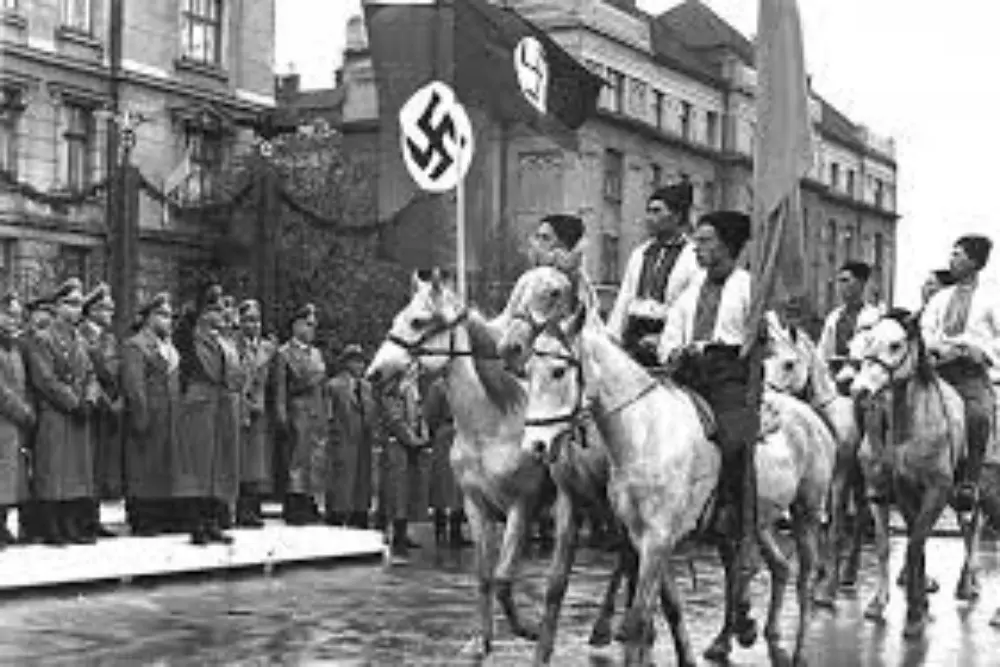
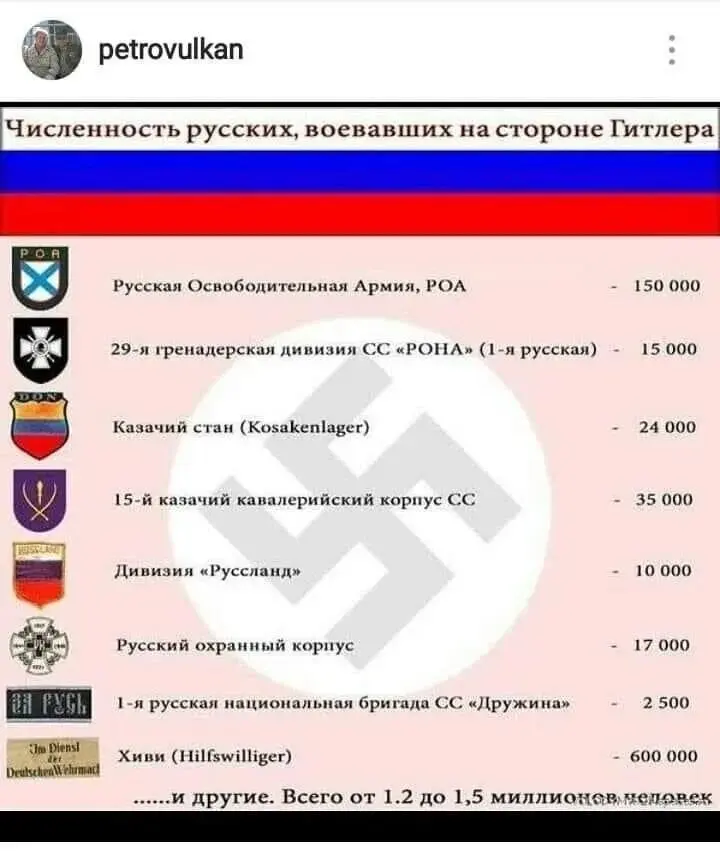
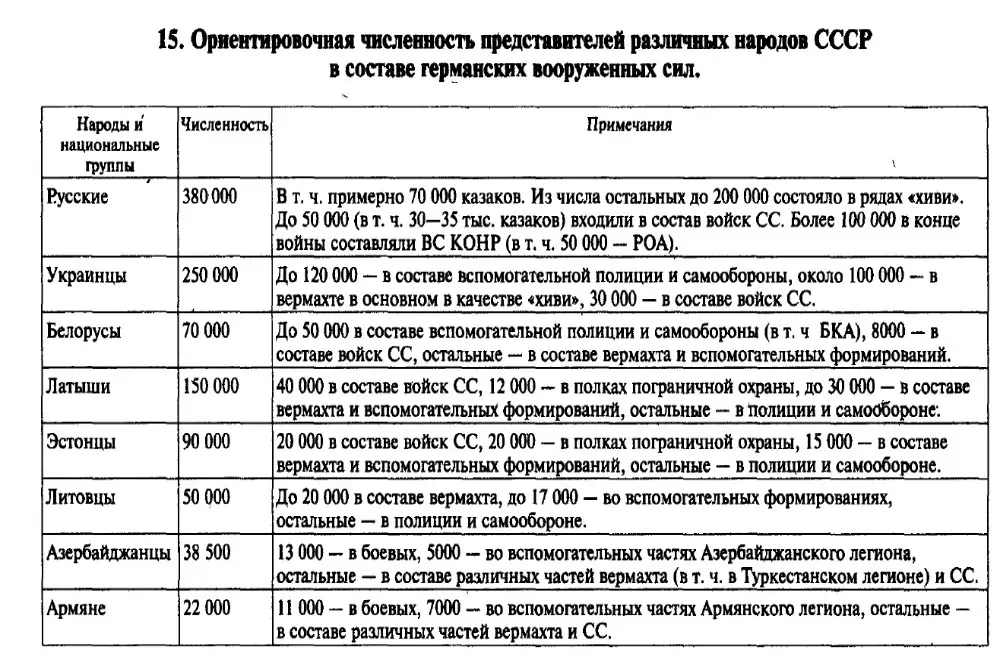
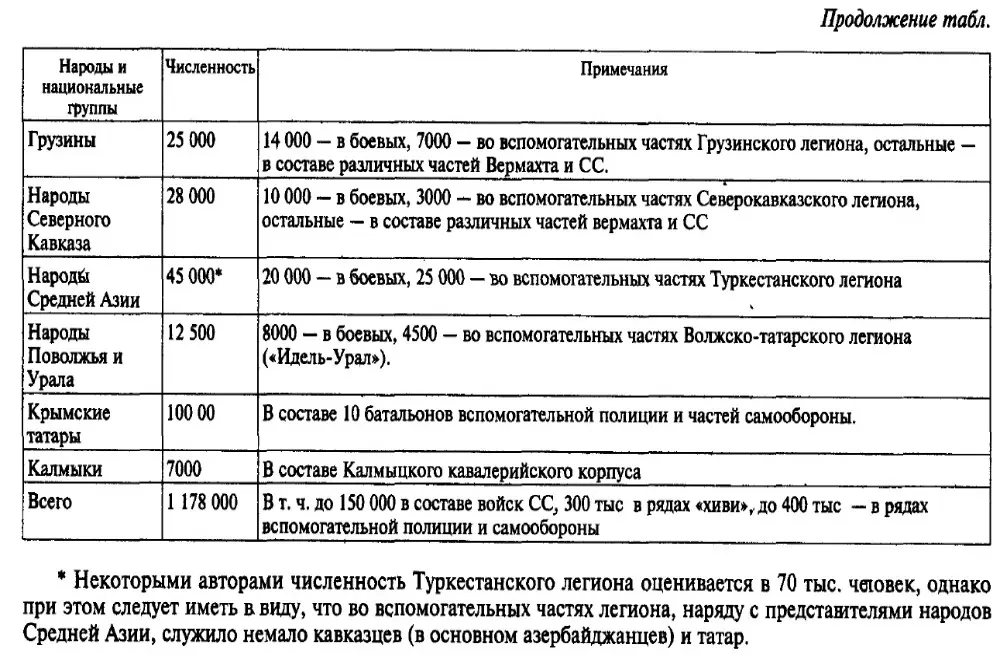
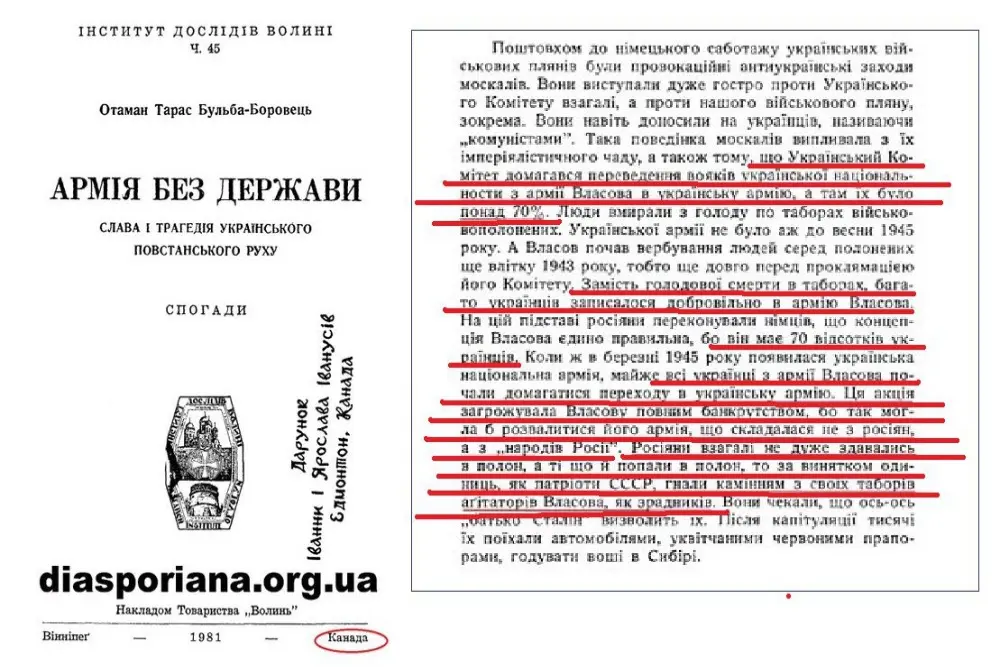
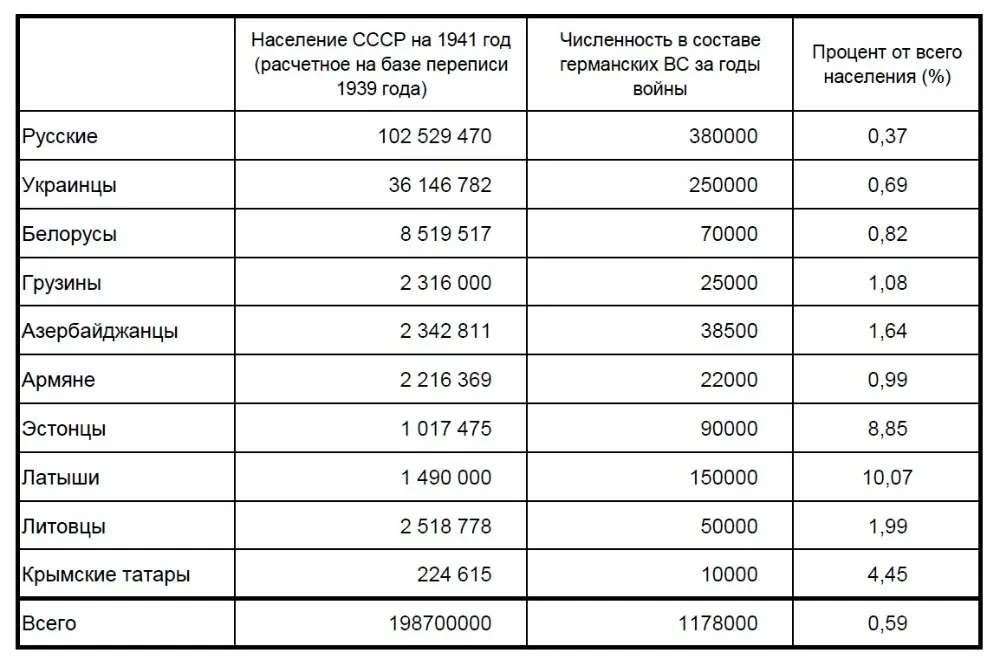
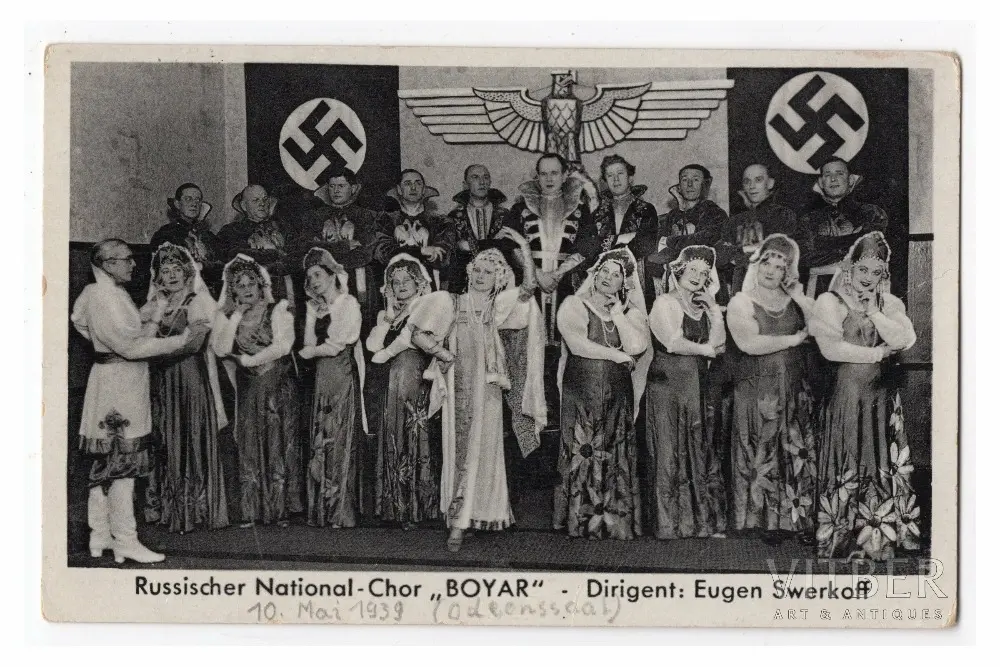

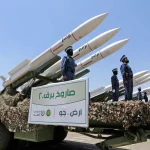



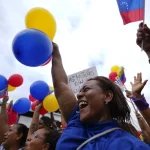





Comments